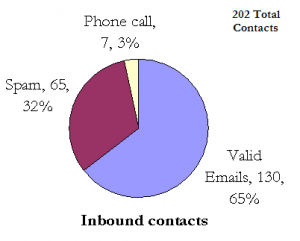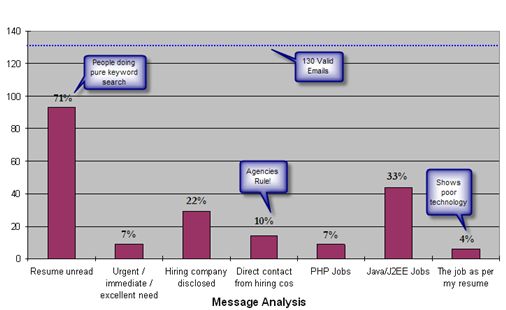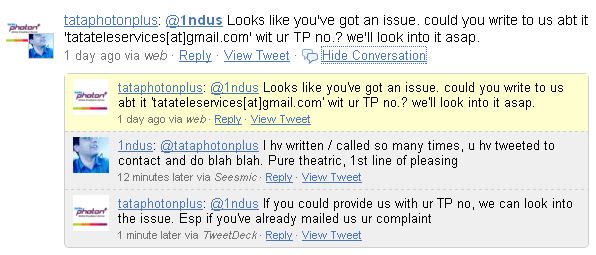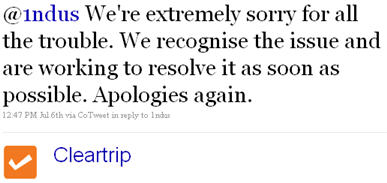Around 10 weeks ago, I started an experiment to assess the state of affairs of the online career portal market in India. More than that I was experimenting to get the state of affairs for ‘getting a job using online career portal’ in India.
The objective of the experiment was to assess a few things viz. (a) whether a candidate gets connected to the right job (b) are the recruiters or the companies contacting the candidate with right job openings (c) Guesstimate the missing workflow & technology pieces around matching / follow up, etc. (d) get a general pulse of the career portals around usability, experience, bugs, design, quirks, etc. (for private consumption)
I started by:
1. Creating a brand new Gmail account
2. Updated my old resume (excluded the current experience at Morpheus)
3. Created new accounts on a few popular career portals (not gonna name them here).
3. Uploaded the resume and made it searchable / visible– Tried to complete the profile as much as possible, except activating my SMS (one portal nagged every time I logged in to allow them to send me SMS!)
Fast forward to today and man it sucks! Most of the career portals are living the dot-com dream. However, I’m not going to do any comment on their usability, workflow and various issues/bugs I have found.
The moment I activated my resume, spam was the first one to get into my inbox — In various forms, including spam from management institutes & colleges which wanted me to do an executive course or two. There were a few direct phone calls of recruiters who were really interested in hiring me, whereas most of the recruiters used a standard template asking the current CTC, notice period and never actually bothering to read my resume!
Here is the analysis of the contact points (email & phone calls):
In the total 10 weeks, I got around 130 readable emails and 7 phone calls. The good part was that largely, the recruiters who called actually bothered to read the resume and were interested in hiring rather than shooting emails to complete a bean count. Around 10-15 emails per day is not all that bad, but what I found that a majority of the recruiters never read the resume. Here’s another graph which tells more (click on the image to see hi-res version):
The analysis of charts & the emails tells a few things:
1. The recruiters, especially the agencies outsourced to hire people for “consulting” gigs, do not even bother to read the resume. They want people for their software factories using plain vanilla keyword search
2. Extending to the above thought — I presume (haven’t seen the recruiter interface of any of the career portal) that there are no matching tools being used
3. A large number of recruiters fire & forget — There were certain instances where I responded to the email asking them to send more information, but went unanswered. Infact, a recruiter who called me for a VP role at a larger company never followed up with a job description of that position.
4. The number of job openings which actually matched what I wanted was around 6. This is because the right tools are missing.
5. I also felt that recruiters use the career portals as pure lead gen ignoring the fact that the resume has more data then the discussion with the candidates back and forth.
6. Even if you are the CEO of Google and mention Java in a project which you worked on 15 years ago, you may still get an offer to get hired for a Sr. Java Engineer position.
7. Recruiters seldom personalize the emails — Just BCC everybody and their dog who had Java in their resume.
There are other fine nuggets which I’ve kept it with me and revolve around quirky issues with specific portals. Recruiters are definitely the culprits, but my fingers are pointing towards the career portals who lack proper tools and are monetizing heavily for the lack of viable “branded” alternatives.
I think there is a lot of room for brand new, green field innovation in the hiring / career segment in India. Do you have ideas? I have some.
Publicly apologizing to a few recruiters who are good friends and nice guys, they were surprised when I posted my resume on these sites without calling them first. Now you know. Yeah, I would call you back when I’m looking for a change 🙂




 Unless you write a manuscript and revise it multiple times and get rejected by at least 5 publishers–how can you write one of India’s best-selling book? Unless 20 VCs label your ideas as stupid, how can the 21st get it funded?
Unless you write a manuscript and revise it multiple times and get rejected by at least 5 publishers–how can you write one of India’s best-selling book? Unless 20 VCs label your ideas as stupid, how can the 21st get it funded?